The Equinox Ablaze: How Fire Remakes Time at The World's Most Fiery New Years Festival
The Kurdish mountain town of Akre ignites Nowruz, the Persian New Year, into the Middle East's largest fire festival, a blazing celebration where people and the Earth both reset.
📍 Akre, Kurdistan, Iraq
My adventures have often prompted me to ponder the nature of time. I've witnessed time’s enduring nature while on a pilgrimage to Mount Athos, Greece — the closest I’ve gotten to time travel. This was thanks to two thousand reclusive monks who live according to the Byzantine (Julian) calendar, which has been obsolete since 1582 and is thirteen days behind the Gregorian calendar used by the rest of the world.
On the other end of the spectrum, I’ve felt time’s ephemeral nature at the ever-changing sands of Azugit, Mauritania's largest dune. Furious winds shift Azugit’s sands in a way that ensures the dunes never look the same for more than a split second.
But in Akre, a mountain town in Iraq’s Kurdish north, I felt both the ephemeral and eternal essence of time, all at once, during its annual Nowruz (New Year) celebration.
In Akre, I joined the Kurds in celebrating not just the passage of time, but the planet’s capacity for regeneration and, by extension, our own renewal. Here, nature isn't just a backdrop; it's the main character and honored guest. Nowruz is the largest New Year festival tied to an equinox, marking the precise moment the Earth's axis tilts neither toward nor away from the sun, resulting in equal day and night. Unlike the Gregorian New Year (January 1st), a date fixed by historical decree and papal reforms, Nowruz arrives with the astronomical precision of an astronomical event. Celebrating Nowruz here felt refreshingly unfamiliar: I found myself aligning with the Earth's own rebirth — a rhythm that predates the calendars and resolutions that accompany the human-created milestone of January 1st.
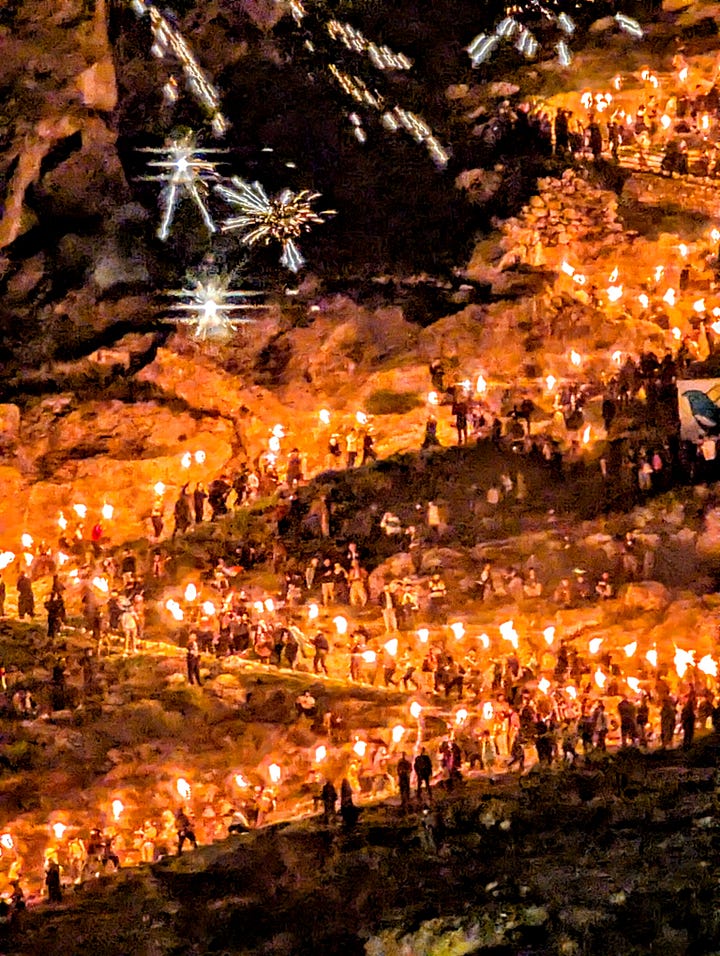
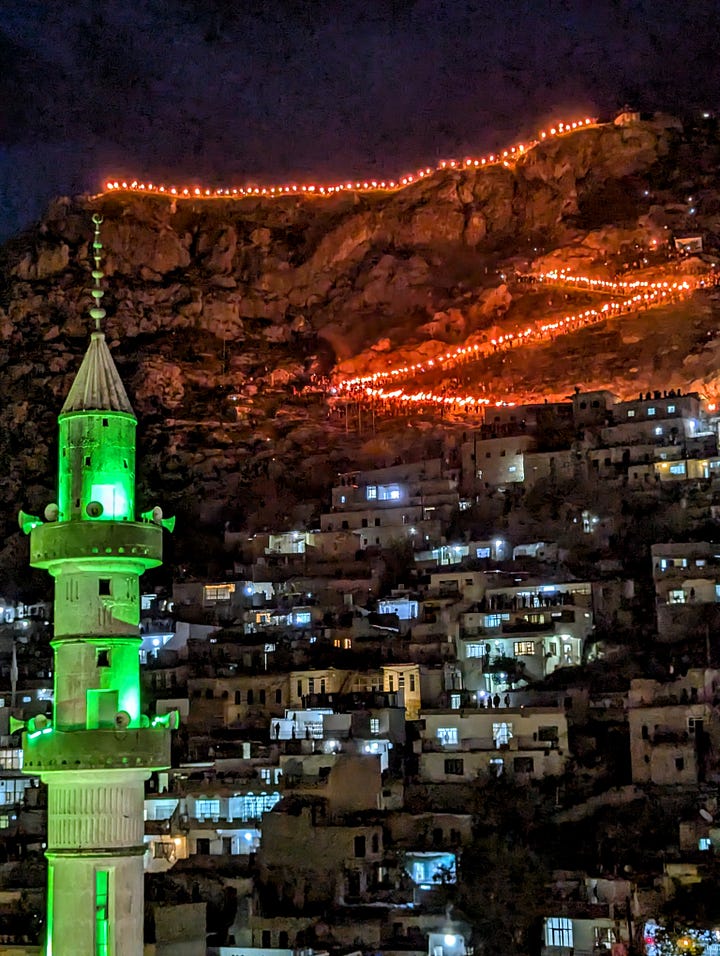


Contrary to what I first thought, renewal for local Kurds isn't born from a blank slate. Instead, it's about forging into the future, deeply anchored by the strength of knowing who they are and where they come from. They spared no opportunity to display their identity: the rhythmic daf drums and the melodies of the blul (Kurdish flute); the taste of spring foods on Haft-Seen tables; and Kurdish flags so immense they draped a quarter of the mountainside. Women, adorned in jewel-toned dresses with gold-threaded sashes, spun in tight circles, followed by men whose shoulders rose and fell in unison, their feet drumming the earth as if to summon the spring. Every dance step, song, and flame underscored the Kurdish story, binding them to each other in their ancestral land. It all felt infinitely more meaningful than just flipping a calendar page.
In a region where cultural expression has been brutally suppressed, this vibrant assertion of Nowruz traditions — from wearing traditional attire and street parades with Kurdish flags to lighting fires on mountainsides — is a powerful act of communal affirmation. While the Western New Year is largely an inclusive, secular holiday, Akre's Nowruz often carries a more specific declaration of "we are here", a direct challenge to forces, most recently Saddam Hussein and ISIS, that have tried to diminish or erase the Kurdish presence here.
Standing among the swelling torchbearing crowd, I felt how profoundly earned this New Year celebration felt. Back home, January 1st arrives with a momentary countdown following a night of planned (and sometimes forced) revelry or the stillness of a simple day off. In Kurdistan, though, New Year is a collective journey — not just the torch-bearers' ascent up the Zagros peaks, but the entire community coming together to demarcate time and usher in the spring after the dark months. The air crackled not just with fireworks and burning wicks, but with focused intention. Rather than passively waiting for a midnight ball to drop, Nowruz felt like a communal effort to turn a cosmic page.
Akre's Nowruz made me feel truly alive. It's not just a celebration centered around a flicker in time, but a series of connective actions — with each other, a common heritage, and the rhythms of the planet. Take khaneh tekani (shaking of the house), for instance: this thorough spring cleaning is more than domestic tidying; it's a symbolic sweeping away of the prior year's misfortunes to welcome fresh blessings. Tables in Akre contain deliberately chosen items like sabzeh (sprouted lentils or wheat) to symbolize rebirth, directly connecting with the land and its life-giving properties. Nowruz festivities can last up to two weeks, with locals visiting family, elders, and friends, reinforcing bonds that fleeting Western New Year's Eve parties simply don't demand. This deep connection is felt keenly by the 300 million people across the globe who celebrate Nowruz, from the Balkans to the Middle East.

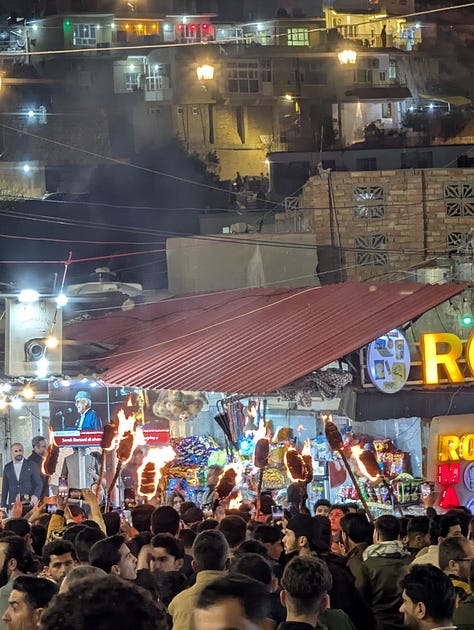

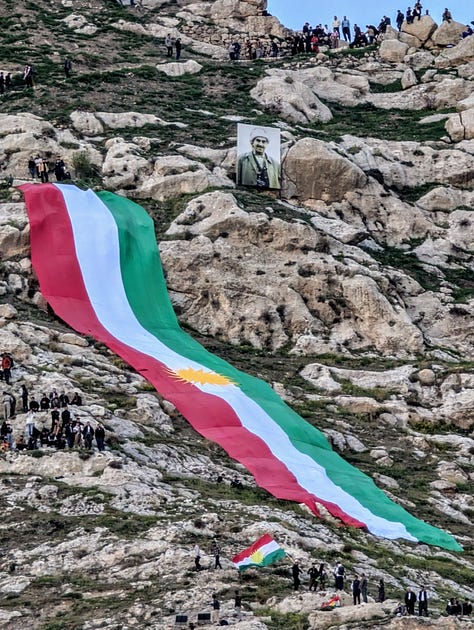
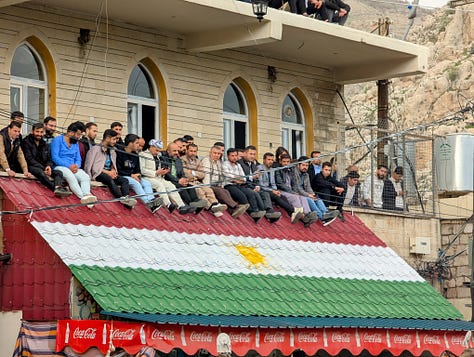
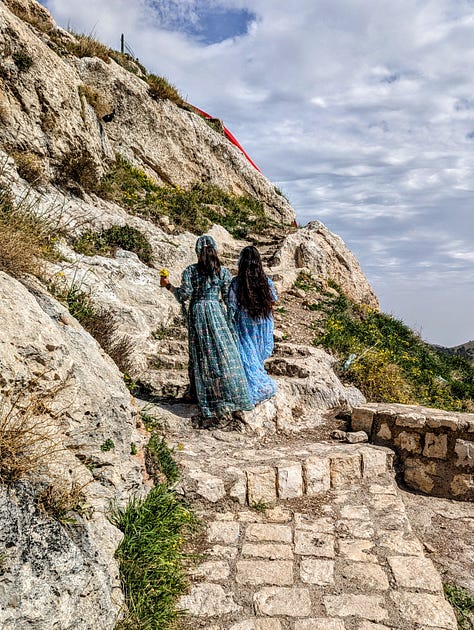
Nowruz dates back over three thousand years to the Zoroastrian legends of ancient Persian kings and the primordial triumph of light over darkness. Its predecessor might have been Akitu, the ancient Babylonian New Year festival, also celebrated at the spring (vernal) equinox. For the agrarian societies of ancient Mesopotamia, this astronomical event signaled the vital start of the planting season — a time crucial for their sustenance and survival.
The seemingly endless river of torches flowing up the mountainside felt weightier than the ephemeral bursts of fireworks above. The snaking procession of thousands of torches wasn’t just for show; their fire felt elemental, blazing with nature’s greatest renewer — burning away the old and stale, and warmly (or rather hotly) welcoming what awaits. As the last torchbearer reached the summit, a bombastic firework finale erupt over Akre. A shared gasp of wonder rose from thousands of us below as the light brilliantly banished the night sky.
Between the fire torches and fireworks, Nowruz in Akre felt like a vibrant dialogue between the ancient and the contemporary. Here, a timeless, millennia-old torch-bearing ritual seamlessly joined forces with the most modern of fireworks. This experience made me reflect on my own attempts to connect with the past through Western celebrations like Martin Luther King Jr. Day or religious ones such as Passover, Hanukkah, and Sukkot. Compared to Nowruz, these often feel more like calendared reminders than an integrated, ongoing story. In Akre, on March 20, the past wasn't a mere reenactment; it was a living foundation upon which the present unfolds and the future is built.
In Iraq, a country infamous for its instability, the world surprisingly felt in balance for a moment: equal parts night and day, longing and hope, tradition and modernity. I came to understand that the equinox is more than an astronomical event; it is a reminder that even in a world of constant upheavel, a fundamental order endures. This sense of balance, I felt, was the true essence of Nowruz.



